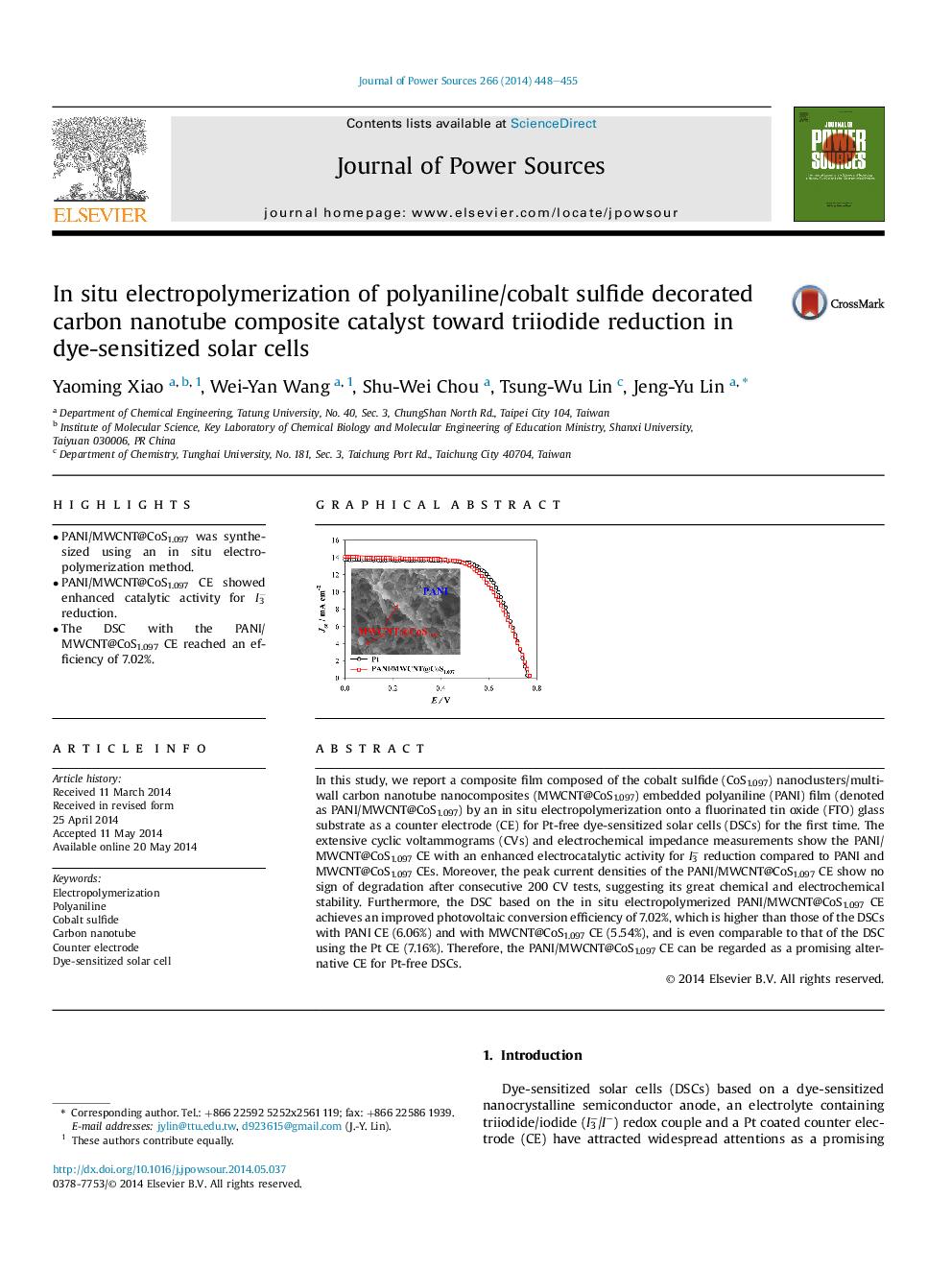| Article ID | Journal | Published Year | Pages | File Type |
|---|---|---|---|---|
| 1286783 | Journal of Power Sources | 2014 | 8 Pages |
•PANI/MWCNT@CoS1.097 was synthesized using an in situ electropolymerization method.•PANI/MWCNT@CoS1.097 CE showed enhanced catalytic activity for I3− reduction.•The DSC with the PANI/MWCNT@CoS1.097 CE reached an efficiency of 7.02%.
In this study, we report a composite film composed of the cobalt sulfide (CoS1.097) nanoclusters/multi-wall carbon nanotube nanocomposites (MWCNT@CoS1.097) embedded polyaniline (PANI) film (denoted as PANI/MWCNT@CoS1.097) by an in situ electropolymerization onto a fluorinated tin oxide (FTO) glass substrate as a counter electrode (CE) for Pt-free dye-sensitized solar cells (DSCs) for the first time. The extensive cyclic voltammograms (CVs) and electrochemical impedance measurements show the PANI/MWCNT@CoS1.097 CE with an enhanced electrocatalytic activity for I3− reduction compared to PANI and MWCNT@CoS1.097 CEs. Moreover, the peak current densities of the PANI/MWCNT@CoS1.097 CE show no sign of degradation after consecutive 200 CV tests, suggesting its great chemical and electrochemical stability. Furthermore, the DSC based on the in situ electropolymerized PANI/MWCNT@CoS1.097 CE achieves an improved photovoltaic conversion efficiency of 7.02%, which is higher than those of the DSCs with PANI CE (6.06%) and with MWCNT@CoS1.097 CE (5.54%), and is even comparable to that of the DSC using the Pt CE (7.16%). Therefore, the PANI/MWCNT@CoS1.097 CE can be regarded as a promising alternative CE for Pt-free DSCs.
Graphical abstractFigure optionsDownload full-size imageDownload as PowerPoint slide
